You can create stunning textured metal jewelry using five simple workshop techniques that transform ordinary surfaces into artistic masterpieces. Ball burr texturing with a Dremel tool produces variable surface effects through pressure control, while tracing tip methods offer precision for detailed patterns. Bocfil blade techniques create organic, flowing line work, and abrasive disks generate beautiful brushed metal finishes. Drilling patterns add dimensional openwork textures that catch light beautifully. Master these fundamental approaches to reveal endless creative possibilities.
Ball Burr Texturing for Variable Surface Effects
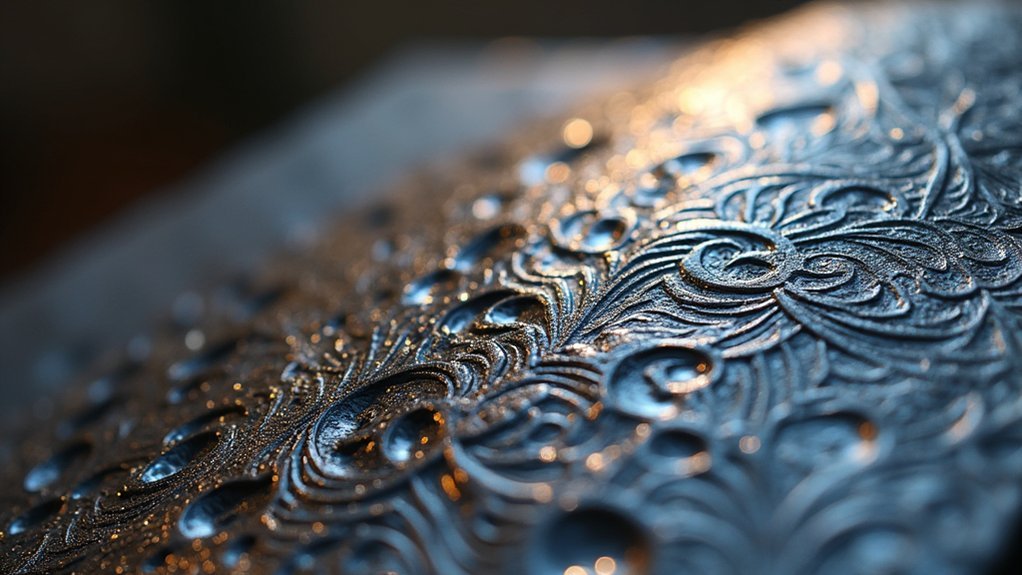
The ball burr technique transforms ordinary metal surfaces into compelling textured landscapes using a simple Dremel tool equipped with a ball cutter attachment.
Transform plain metal into stunning textured art with just a Dremel and ball cutter attachment.
You’ll discover that ball burr texturing offers remarkable versatility through pressure variation. Light pressure creates delicate grooved patterns, while heavy pressure produces bold hammered textures. This range allows you to achieve diverse design effects on your jewelry pieces.
Before working on finished jewelry, practice on metal plates to master tool control and prevent costly mistakes. Consistent practice develops your skill and prevents damage to valuable pieces.
Always wear protective eyewear and maintain steady hand control to avoid dangerous slips. The ball burr texturing technique greatly enhances your jewelry’s visual appeal when properly executed with patience and precision.
Tracing Tip Methods for Precise Pattern Creation
While ball burr techniques excel at creating organic, flowing textures, tracing tip methods offer precision for detailed pattern work that mimics drawing with a pen on paper.
You’ll achieve clean, intricate designs on metal surfaces using this versatile technique.
Start by polishing your jewelry’s surface thoroughly – smooth finishes enhance pattern clarity and sharpness.
Practice with your tracing tip on scrap metal first to develop precision and confidence before working on final pieces.
For striated effects, draw lines using a ruler and scribe, carefully aligning the center of your piece for balanced patterns.
The tracing tip allows various design possibilities, from simple outlines to complex, layered patterns that add visual depth.
This technique transforms flat metal surfaces into detailed, professional-looking designs.
Bocfil Blade Techniques for Organic Line Work

Although tracing tips provide precision for structured patterns, bocfil blade techniques release creative freedom for organic, flowing line work that breathes life into your metal jewelry.
You’ll discover that varying pressure while sawing creates pronounced or softer lines, enabling unstructured designs that feel naturally artistic.
Tilt your bocfil blade slightly during strokes to enhance texture and depth, adding unique character to each piece.
Experiment with different stroke lengths to generate playful, irregular patterns perfect for naturalistic aesthetics.
This technique excels at adding intricate details, making it invaluable for incorporating artistic elements into your metalwork.
Regular practice with the bocfil blade develops your personal style and masters organic line creation.
Abrasive Disk Applications for Brushed Metal Finishes
Abrasive disks transform ordinary metal surfaces into stunning brushed finishes that elevate your jewelry’s visual appeal and tactile quality.
When you mount an abrasive disk on your Dremel tool, you’ll create beautiful light brushed effects that enhance metal texture and appearance.
Control your pressure and rotation speed carefully—these factors directly influence your finish quality. You’ll achieve varying texture levels by selecting different grits of abrasive disks or sandpaper, allowing complete customization based on your desired effect.
Change your abrasive disk regularly to maintain consistent results and prevent excessive wear that compromises finish quality.
Practice experimenting with different pressure levels and angles during application. This experimentation leads to unique brushed effects that contribute greatly to your jewelry piece’s overall design impact.
Drilling Patterns for Openwork Texture Designs
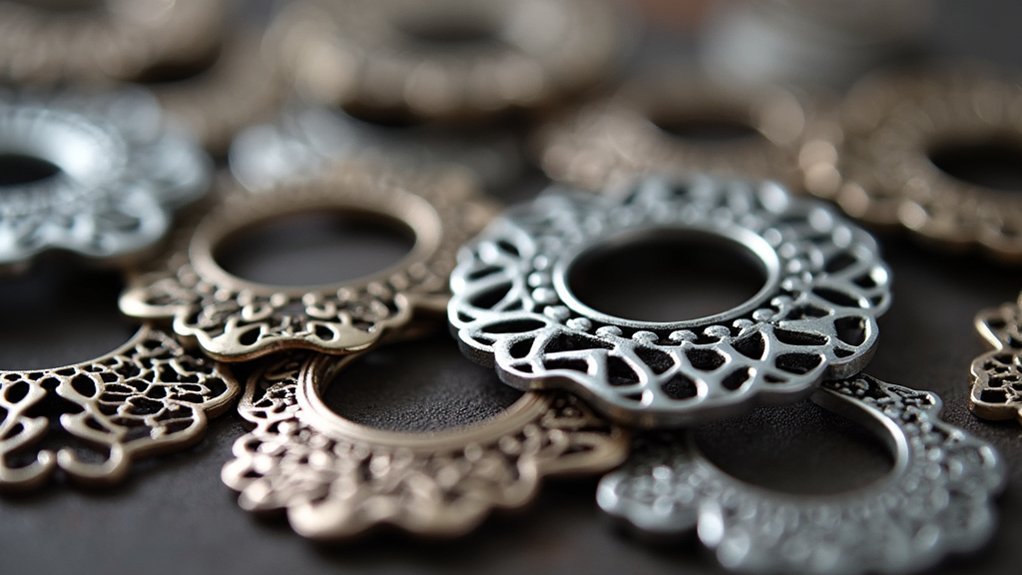
Beyond surface treatments like brushing, you can create dimensional texture through strategic drilling patterns that remove material entirely.
Start by polishing your metal surface, then use a tracing tip to mark your desired design for guidance before drilling. Select drill bit diameters based on the hole sizes you want to achieve in your openwork pattern. This guarantees precision in your drilling patterns and maintains design integrity.
During drilling, regularly lubricate your drill bit with beeswax to prevent overheating and guarantee smoother operation. The wax reduces friction and extends bit life while creating cleaner holes.
Practice continuously with different drill sizes and patterns to develop your skills in creating intricate openwork textures. Each drilling session builds your confidence and refines your technique for more complex designs.
Frequently Asked Questions
What Are the Techniques Used in Texturing Metal?
You’ll hammer everyday tools onto metal surfaces, use rolling mills with texture plates, employ Dremel attachments for varied effects, create inlays with wire embedding, and experiment with household items like screws.
How Do You Make Metal Look Textured?
You’ll hammer textured tools like nails onto softened metal secured on a bench block. Try different angles and use materials like drywall mesh with rolling mills to create varied surface patterns and impressions.
How to Texture Silver Without a Rolling Mill?
You can texture silver by hammering household items like screws or nails onto the metal surface. Place silver on a sandbag, secure with tape, and hammer at different angles to transfer unique patterns without needing specialized equipment.
How to Hammer Texture Metal?
You’ll secure your metal on a stable surface like a sandbag, then use a brass or texturing hammer with varying pressure to create grooves and marks across the surface.
In Summary
You’ve now mastered five essential texturing techniques that’ll transform your metal jewelry from plain to extraordinary. Whether you’re creating subtle brushed finishes with abrasive disks or bold openwork patterns through strategic drilling, these methods give you complete control over your piece’s visual impact. Don’t hesitate to combine techniques—mix ball burr textures with tracing tip patterns or layer bocfil blade work over brushed surfaces. Your creative possibilities are limitless.

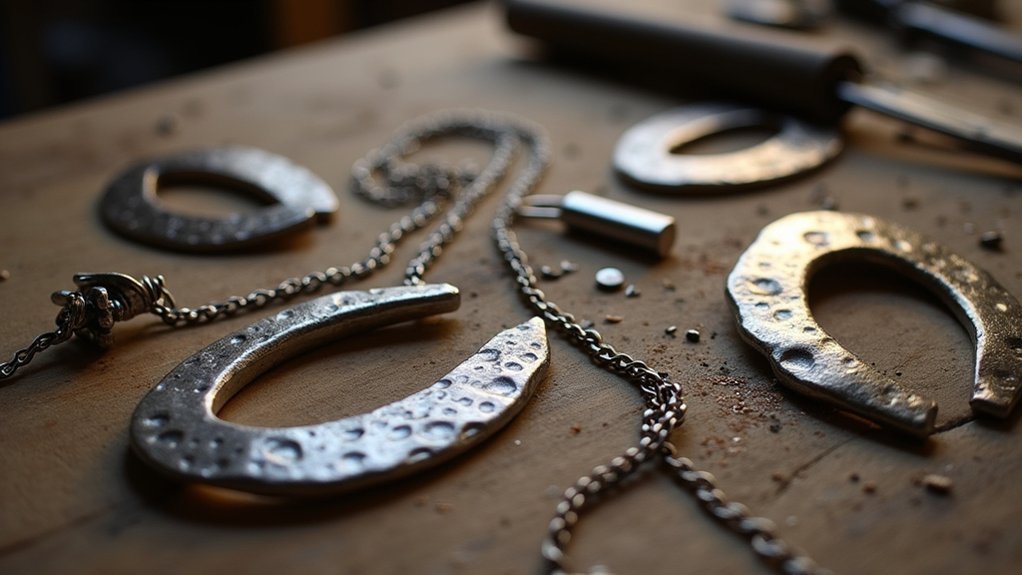
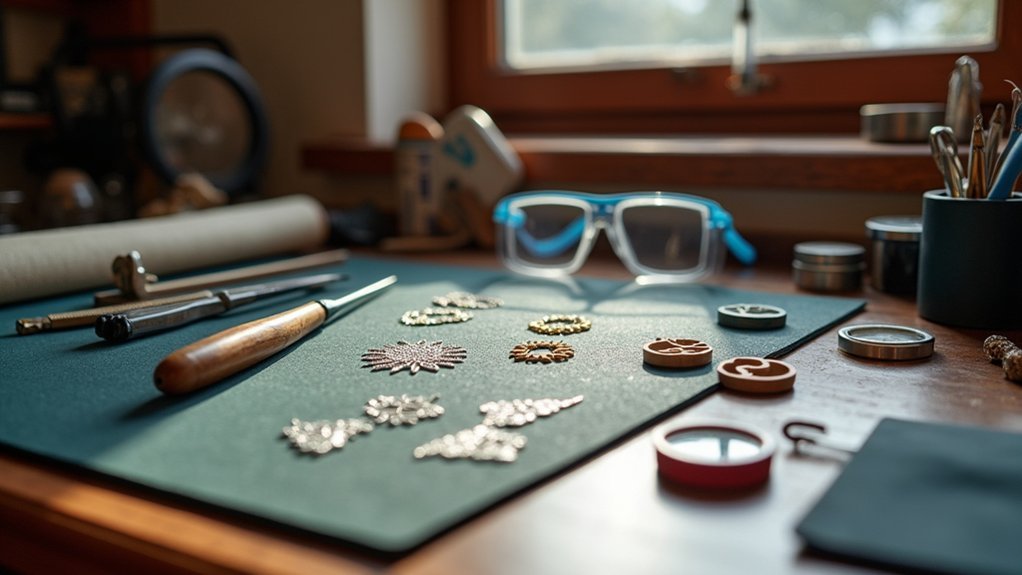
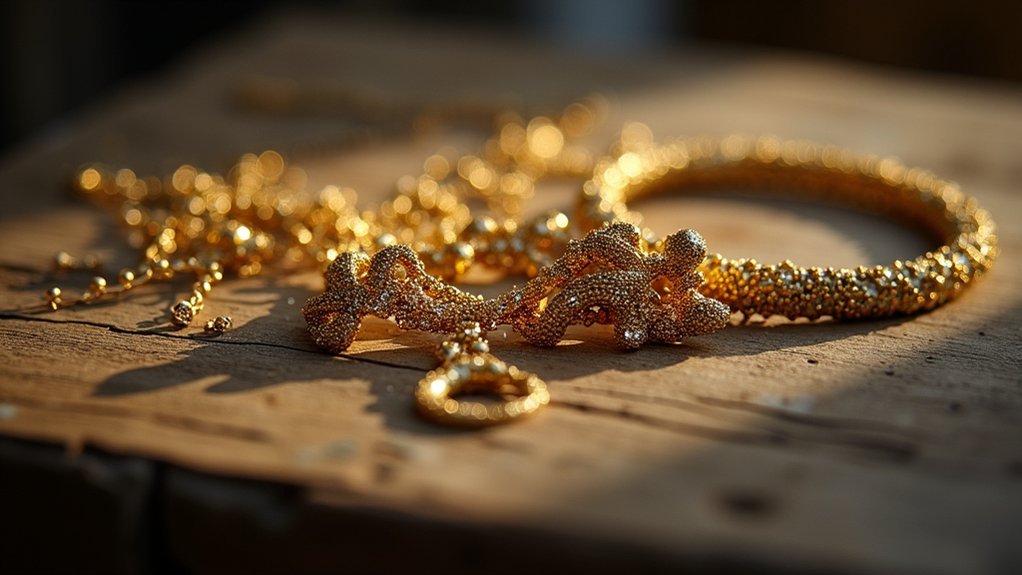
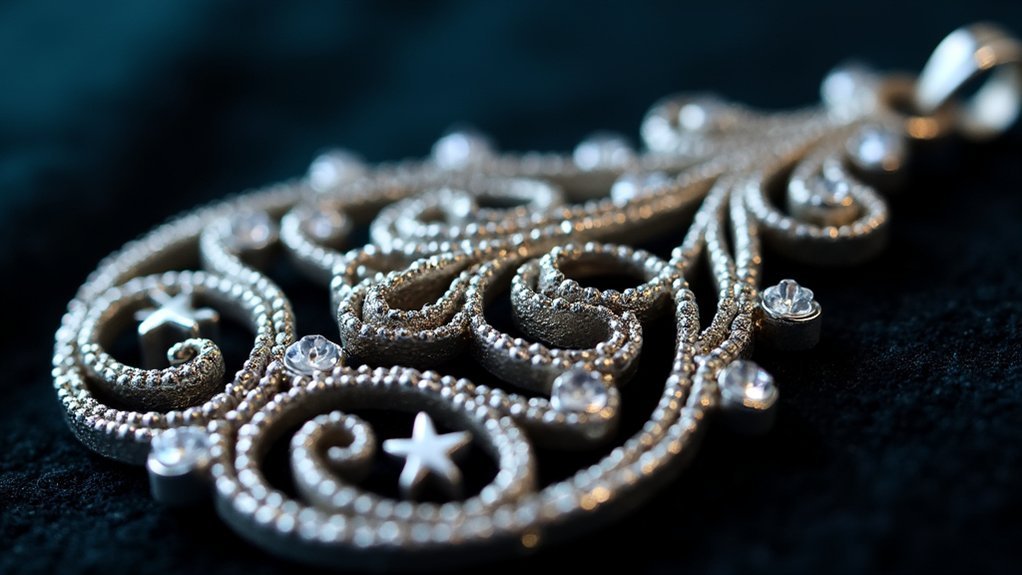
Leave a Reply